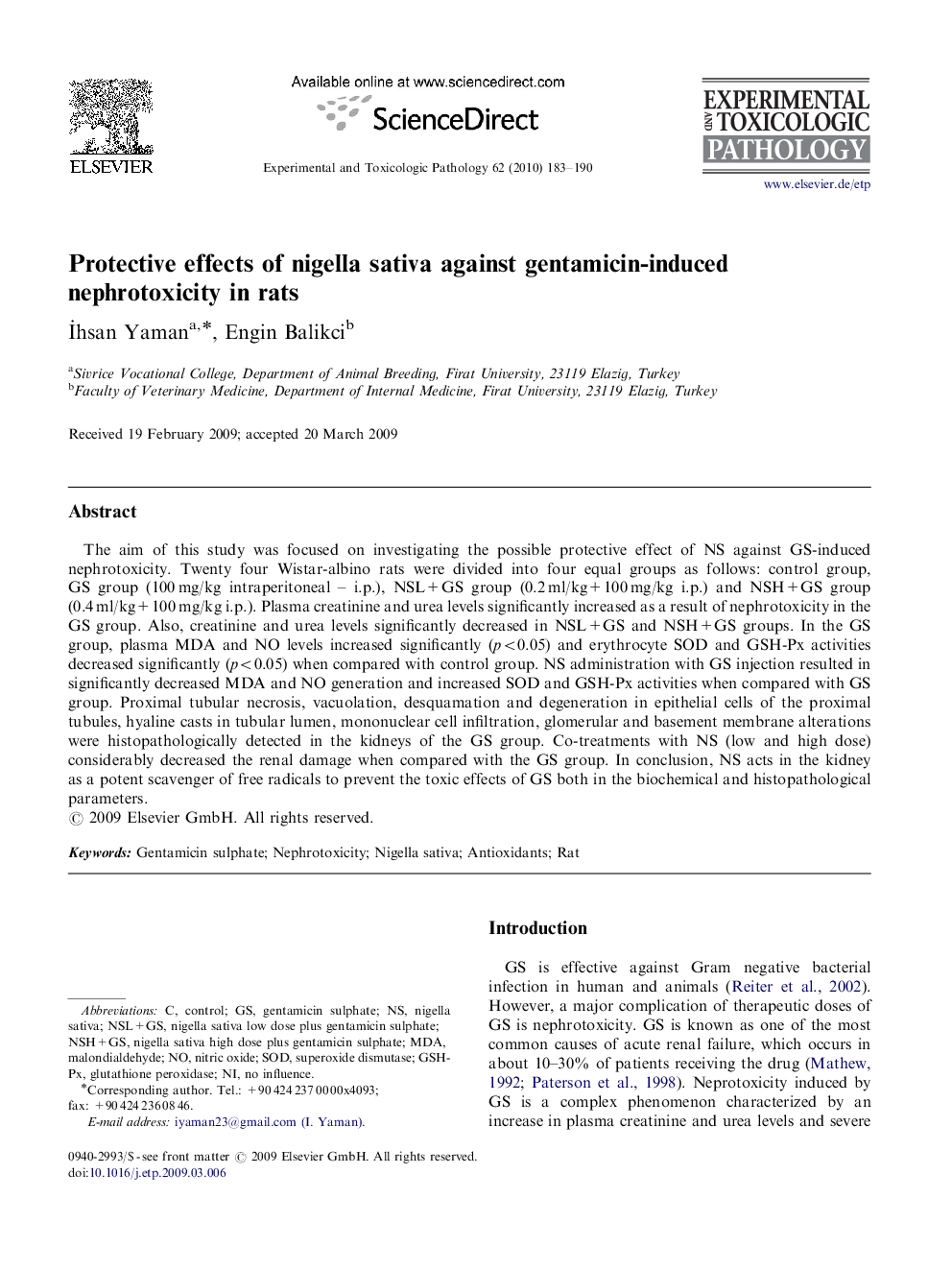| Article ID | Journal | Published Year | Pages | File Type |
|---|---|---|---|---|
| 2499125 | Experimental and Toxicologic Pathology | 2010 | 8 Pages |
The aim of this study was focused on investigating the possible protective effect of NS against GS-induced nephrotoxicity. Twenty four Wistar-albino rats were divided into four equal groups as follows: control group, GS group (100 mg/kg intraperitoneal – i.p.), NSL+GS group (0.2 ml/kg+100 mg/kg i.p.) and NSH+GS group (0.4 ml/kg+100 mg/kg i.p.). Plasma creatinine and urea levels significantly increased as a result of nephrotoxicity in the GS group. Also, creatinine and urea levels significantly decreased in NSL+GS and NSH+GS groups. In the GS group, plasma MDA and NO levels increased significantly (p<0.05) and erythrocyte SOD and GSH-Px activities decreased significantly (p<0.05) when compared with control group. NS administration with GS injection resulted in significantly decreased MDA and NO generation and increased SOD and GSH-Px activities when compared with GS group. Proximal tubular necrosis, vacuolation, desquamation and degeneration in epithelial cells of the proximal tubules, hyaline casts in tubular lumen, mononuclear cell infiltration, glomerular and basement membrane alterations were histopathologically detected in the kidneys of the GS group. Co-treatments with NS (low and high dose) considerably decreased the renal damage when compared with the GS group. In conclusion, NS acts in the kidney as a potent scavenger of free radicals to prevent the toxic effects of GS both in the biochemical and histopathological parameters.
